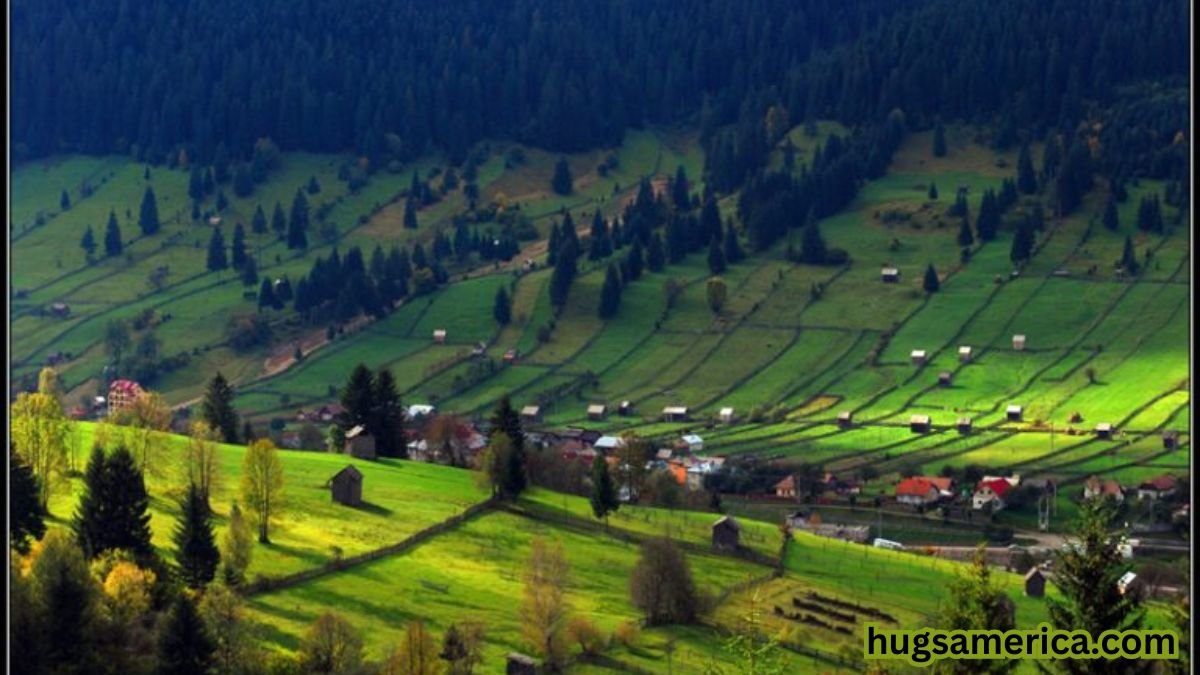I. Introduction
Nestled amidst breathtaking mountain ranges, with snow-capped peaks and lush valleys as its backdrop, the quintessential chaleturi stands as a symbol of rustic charm and luxury. These wooden structures, often adorned with intricate carvings and expansive balconies, evoke a sense of warmth and coziness that is hard to find elsewhere. Once simple dwellings for Swiss herders, chaleturi have undergone a remarkable transformation over the centuries, evolving from humble shelters to high-end retreats sought after by luxury travelers and mountain enthusiasts alike.
II. The Humble Beginnings of the Chaleturi
A. Historical Context
The story of the chaleturi begins in the heart of Switzerland, where the traditional way of life revolved around farming and herding. For centuries, Swiss farmers led a seasonal existence, with the harsh winters forcing them to seek shelter in the lowlands, while the summer months took them to the higher altitudes of the Alps. The summer pastures, known as “alpages,” provided the necessary grazing grounds for their livestock. However, the rugged terrain and unpredictable weather posed significant challenges.
B. The Birth of the Chaleturi
To cope with these seasonal migrations, Swiss farmers constructed chaleturi—a term derived from the Latin word “cala” meaning shelter. These early chalets served as functional dwellings during the summer months, offering protection from the elements while enabling farmers to tend to their animals. Built primarily from local materials like wood and stone, these structures were designed to withstand the harsh mountain conditions. Sturdy roofs with steep slopes allowed snow to slide off easily, preventing structural damage, while the use of natural insulation kept the interiors warm.
C. Life in a Traditional Chaleturi
Life within these traditional chaleturi was simple and austere. The interiors were typically divided into two sections: one for the family and the other for livestock. The family quarters often featured a central fireplace, which served as the primary source of heat and a place to cook. Basic furnishings, handmade from wood, adorned the living space. Despite the Spartan conditions, these early chaleturi were a testament to the resourcefulness and resilience of Swiss farmers.
III. Transformation: From Necessity to Allure
A. Shifting Perceptions
As time went on, the beauty and functionality of chaleturi began to attract attention beyond the farming community. The tranquil mountain landscapes, combined with the allure of a simpler, more sustainable way of life, captivated artists, writers, and travelers. The romanticized notion of the chaleturi as an idyllic retreat started to take root in the collective imagination.
B. The Rise of Chaleturi Tourism
The 19th century marked a significant turning point in the chaleturi evolution. With the advent of railway networks and improved accessibility to the mountains, tourism began to flourish. Chaleturi, once solely utilitarian, were now being converted into vacation homes and tourist accommodations. Wealthy travelers from across Europe flocked to the Swiss Alps, seeking refuge from the hustle and bustle of city life. To cater to this growing demand, chaleturi underwent a transformation, incorporating amenities and improvements that catered to leisure travelers. Comfortable furnishings, larger living spaces, and decorative touches became standard features.
C. The Evolution of Chaleturi Architecture
The architectural design of chaleturi also evolved to meet changing needs and aesthetic preferences. Traditional elements such as wooden beams and sloped roofs were retained, but new features were added to enhance comfort and visual appeal. Expansive balconies offered panoramic views of the surrounding landscapes, while larger windows allowed natural light to flood the interiors. Decorative carvings and intricate woodwork became hallmarks of chaleturi architecture, adding a touch of artistry to these mountain retreats.
IV. The Modern Chaleturi: A Symbol of Luxury
A. Redefining the Chaleturi Experience
In the modern era, chaleturi have become synonymous with luxury and opulence. No longer just simple shelters, they are now high-end mountain retreats designed to provide the ultimate in comfort and relaxation. The focus is on creating an experience that seamlessly blends the charm of traditional chaleturi with the conveniences of contemporary living. Modern chaleturi boast state-of-the-art amenities such as fireplaces, hot tubs, saunas, and gourmet kitchens, ensuring that guests enjoy every conceivable comfort.
B. Design Elements of a Modern Chaleturi
The design of modern chaleturi strikes a delicate balance between preserving the rustic charm of the past and incorporating contemporary features. Natural materials like wood and stone continue to play a central role, creating a warm and inviting atmosphere. At the same time, luxurious finishes and high-end fittings elevate the overall aesthetic. Open-plan living areas, large picture windows, and expansive terraces create a sense of space and connection with the natural surroundings. The use of sustainable materials and energy-efficient technologies is also becoming increasingly common, reflecting a commitment to environmental responsibility.
C. The Chaleturi Lifestyle Today
Today, the chaleturi lifestyle is synonymous with relaxation, stunning views, and a deep connection with nature. Whether it’s a winter getaway for skiing enthusiasts or a summer retreat for hikers and nature lovers, chaleturi offer a unique escape from the stresses of everyday life. Imagine waking up to the sight of snow-covered peaks, enjoying a leisurely breakfast by the fireplace, and spending the day exploring picturesque trails. In the evening, unwind in a hot tub under the stars or savor a gourmet meal prepared with locally sourced ingredients. The modern chaleturi experience is all about embracing the beauty of the mountains while indulging in the finest luxuries.
YOU MAY ALSO LIKE
Capturing Unique Travel Perspectives: A Dive into myfavouriteplaces.org:// blog
V. Conclusion
The journey of the chaleturi from humble beginnings to high-end retreats is a testament to its enduring appeal. What started as simple shelters for Swiss farmers has evolved into luxurious mountain getaways that captivate the hearts of travelers worldwide. The charm of traditional design, combined with modern comforts, creates an experience that is both timeless and contemporary.
As the popularity of chaleturi continues to grow, their unique place in mountain tourism remains unchallenged. Whether you’re a luxury traveler seeking opulence or a mountain enthusiast in search of tranquility, chaleturi offer an unparalleled escape. So why not explore the world of chaleturi for yourself? Discover the allure of these iconic mountain retreats and create memories that will last a lifetime.
FAQs
- What is a Chaleturi?
A chaleturi is a wooden house or cottage with a sloping roof and widely overhanging eaves, commonly found in the Alpine regions.
- How did chaleturi evolve from simple shelters to luxury retreats?
Once utilitarian homes for farmers, chaleturi evolved with the rise of tourism in the 19th century, incorporating amenities to cater to leisure travelers.
- What amenities are common in modern chaleturi?
Modern chaleturi often include fireplaces, hot tubs, saunas, gourmet kitchens, and large picture windows offering stunning views.
- Are chaleturi sustainable and eco-friendly?
Many modern chaleturi use sustainable materials and energy-efficient technologies, reflecting a commitment to environmental responsibility.
- What activities can be enjoyed while staying in a chalet?
Chaleturi offer various activities, from skiing and snowboarding in winter to hiking and nature exploration in summer.










